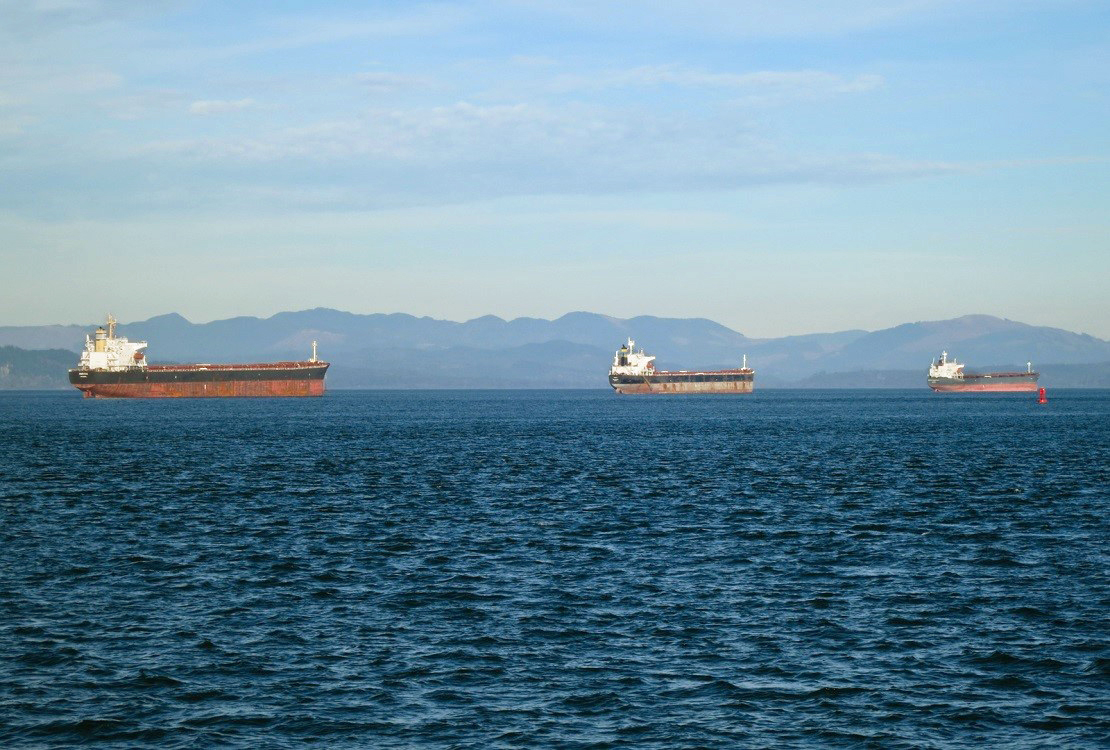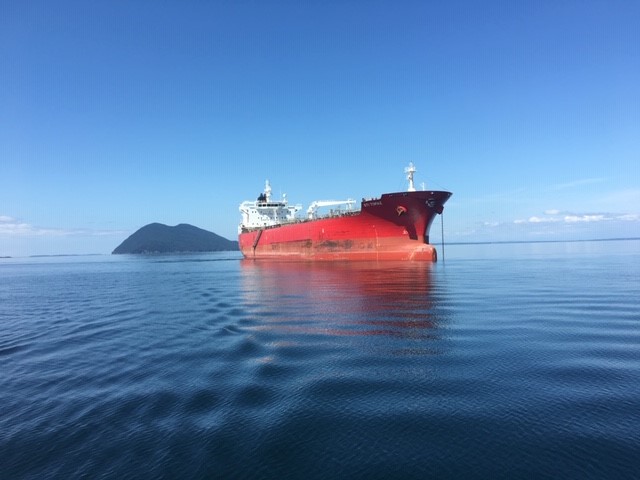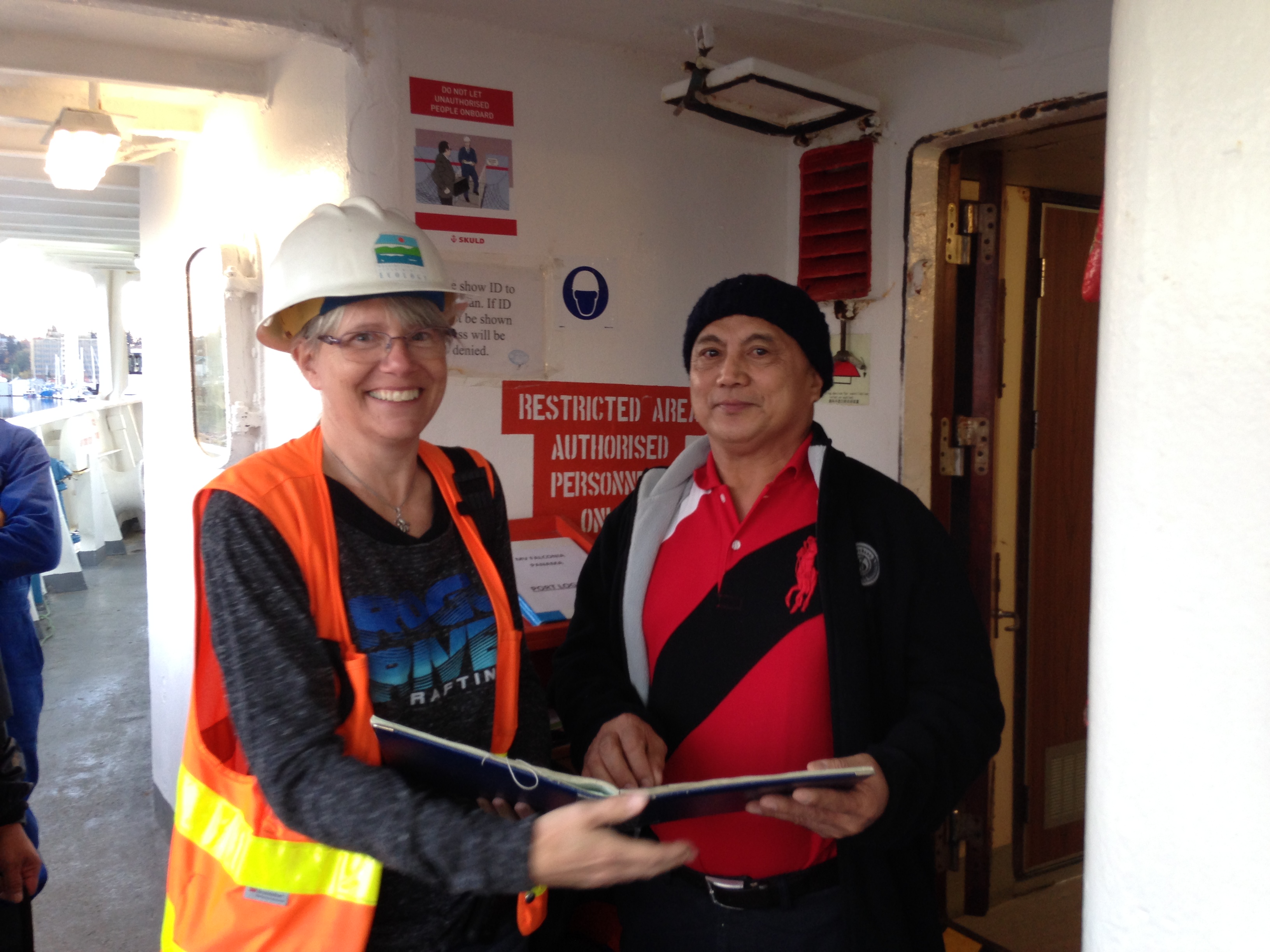
Vessels on the Coumbia River.
The Ecology Spills Program prepares for oil and hazardous substance spills and responds to them with a rapid, aggressive, and well-coordinated posture. However, preventing spills from happening in the first place is the best way to protect the environment and human health. The Spills Program Prevention Section works with industry and other groups to lower the risk of oil spills from vessels, railroads, pipelines, and oil handling facilities.
For the Spills Program, knowing the number of vessels entering Washington waters helps us better understand oil spill risk in state waters and how risks change over time. We published this information in an annual report known as the Vessel Entries and Transits for Washington Waters (VEAT). 2024 marks the 30th anniversary of the VEAT reports! A large vessel in Puget Sound.
This series of annual reports provides a unique, long-term view of vessel movement trends in Washington state. The VEAT specifically tracks transits of cargo vessels, passenger vessels, fishing vessels over 300 gross tons, tank barges, articulated tug and barges, and tankers.
The report counts each individual vessel that comes in and each time it comes in. One vessel may come in and out many times a year. Many tank barges never leave, so significant transits through Washington waters are counted.
Official program
A formal vessel oil spill prevention program was started in 1991 when the Washington legislature created the Office of Marine Safety (OMS) to help prevent oil spills from large commercial vessels.
At this time, there was no official count of the number of these large vessels sailing in our waters. But OMS needed this data for their oil spill prevention efforts, so they coordinated with the Canadian Coast Guard vessel traffic service (VTS) to identify vessel types and count their entering transits.
Tofino Traffic, a radar station and VTS center on the west coast of Vancouver Island, is the first point of contact for vessels required to obtain clearance prior to entering the Puget Sound and was able to provide the needed data.
Things have changed from the early ’90s, and OMS is now a part of our Spills Program. Vessels are required to sign in with Prince Rupert Traffic. Ecology now gets the data needed for the annual report through the Marine Exchange, Merchant Exchange, Chamber of Shipping BC, and other government and industry partners.
Inspector Crews
Starting in 1999, vessel inspector Lori Crews was part of a team of two working on the annual VEAT report. Crews has since become the lead report author, and every January she begins to piece together data from multiple sources to build a comprehensive picture of vessel transits within the state.
In the early days, everything had to be counted by hand. Thankfully, computers have made the counting and sorting easier.
Lori Crews stands with a crewmember aboard a vessel during an inspection.
“I like data, and I like working with the spreadsheets. It’s nice to get that annual overview of what is happening on the water,” she said. “I see it like an annual task that I look forward to every year, like an event. … and occasionally we do presentations from year to year for anyone who wants to see the data.”
Over the years, Crews has noticed changes in the numbers and explored those trends.
“Shipping follows the global economy. As things go up and down, the number of vessels does the same.”
Documenting these changes helps the Spills Program understand potential oil spill risks. For example, fewer ships were counted entering Washington during the global economic slowdown in 2010; tanker-entering transits dropped as a result of oil trains delivering crude to state refineries; and passenger vessel numbers fell to zero during the height of the 2020 pandemic.
“I’ve been doing this for 25 years, and I’ll keep at it,” Crews said. “It is one of the longest-running data records around, and it has maintained the same value for a long time. Gives a fascinating picture of how things have changed.”

